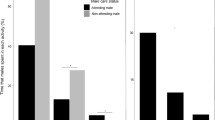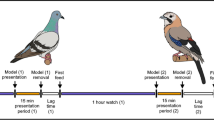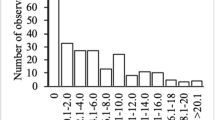Abstract
According to life-history theory, there will often be a conflict between investment in current versus future reproduction. If a predator appears during breeding, parents must make a compromise between ensuring the growth and survival of offspring (nest defence, feeding and brooding of young), and reducing the risk of predation to ensure their own survival. We model three hypotheses for the outcome of this conflict which are particularly relevant for altricial birds. They are not mutually exclusive, but focus on different costs and benefits. (1) Parental investment is determined by the parents’ own risk of predation. This hypothesis predicts that a lone parent should take smaller risks than a parent that has a mate. (2) Parental investment is related to the reproductive value of the offspring: Parents are predicted to take greater risks for larger broods, larger-sized or older offspring. (3) Finally, we present the new hypothesis that parental investment is related to the harm that offspring would suffer during a period of no parental care (incubation, brooding, feeding). This hypothesis predicts that parents should take greater risks for younger offspring, or for offspring in poorer condition, because the marginal benefit of parental care is largest in such cases. Hence, one may also expect that lone parents should take greater risks than two parents because their offspring are more in need of care. We tested these hypotheses on the pied flycatcher (Ficedula hypoleuca) by presenting a stuffed predator of the parents (a sparrowhawk, Accipiter nisus) close to the nest when parents were feeding the young. Risk taking was measured as the time that elapsed until the first visit to the nest. Most support was found for the ‘‘harm to offspring’’ hypothesis. Previous studies have usually measured the intensity of nest defence against typical nest predators, and have found evidence for the ‘‘reproductive value of offspring’’ hypothesis. However, our model predicts that the importance of the reproductive value of the offspring should decrease relative to the harm that offspring would suffer if they were not cared for when the predator type changes from a nest predator to a predator of adults, and when conditions for breeding turn from good to bad.
Similar content being viewed by others
Author information
Authors and Affiliations
Additional information
Received: 13 April 1995/Accepted after revision: 11 March 1996
Rights and permissions
About this article
Cite this article
Dale, S., Gustavsen, R. & Slagsvold, T. Risk taking during parental care: a test of three hypotheses applied to the pied flycatcher. Behav Ecol Sociobiol 39, 31–42 (1996). https://doi.org/10.1007/s002650050264
Issue Date:
DOI: https://doi.org/10.1007/s002650050264




